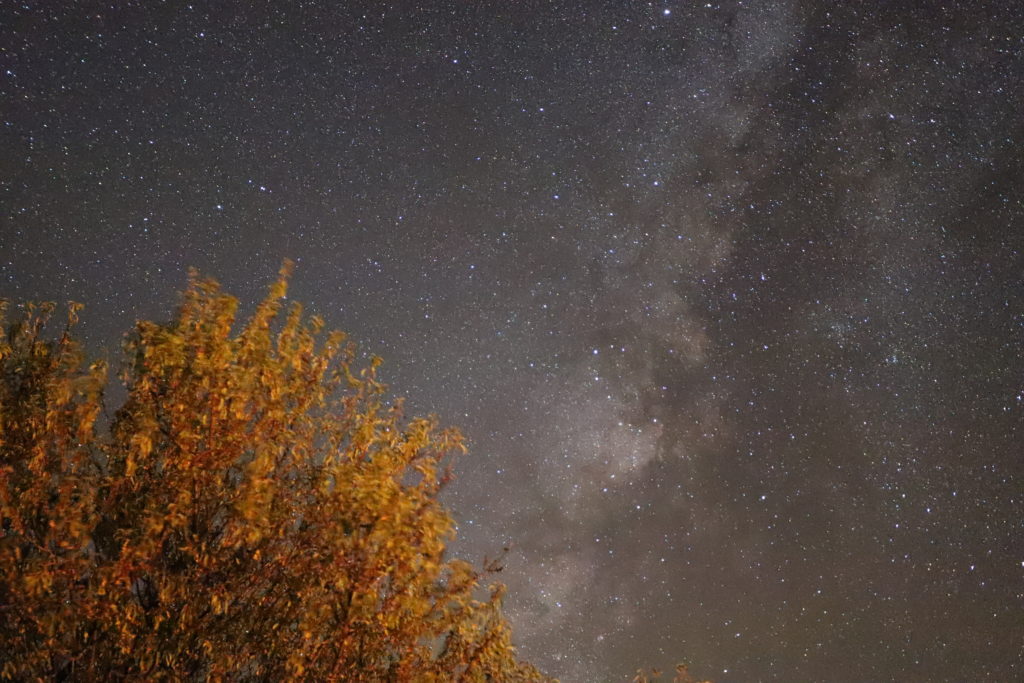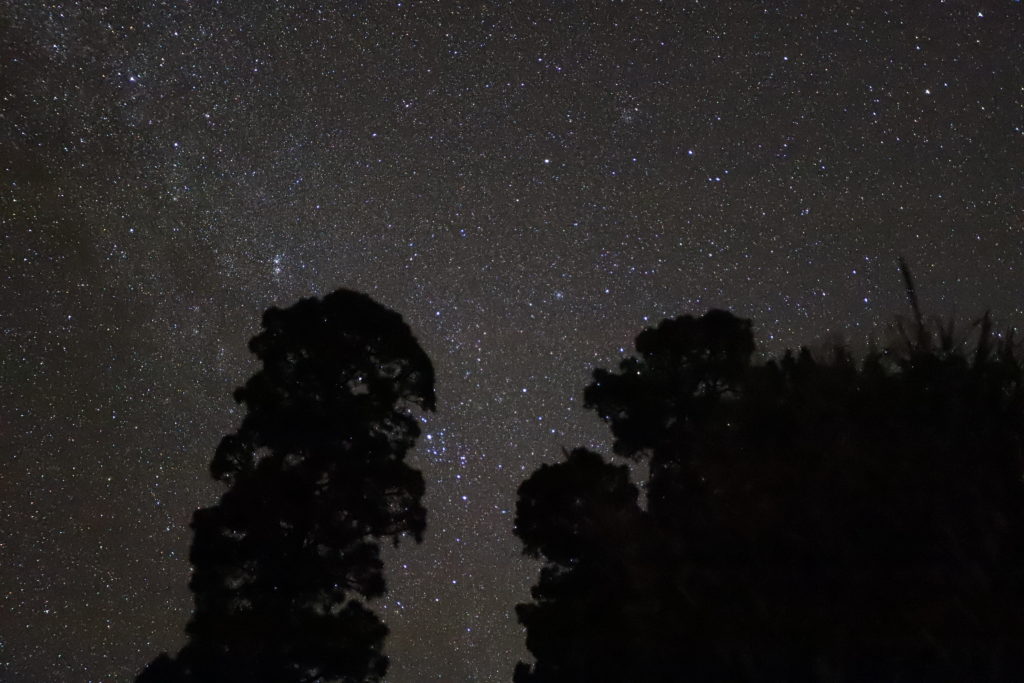Viewing time period – 19:30 – 13:55
Tonight was the first night in La Palma for this expedition. Alan and I setup outside round the side of the property on the path. The weather was warm to start with at around 20 degrees celsius and then cooling later in the evening to around 17 degrees. Alan setup his EQ5, Williams Optics 71mm f/5.9 with his Canon 650D and started the process of polar alignment.
Meanwhile I (Dave Shave-Wall) setup the giant binoculars from Altair, 100mm with the 18mm eyepieces giving a 1.7 degree FoV. I also put back together after the flight, the 6″ Skywatcher dobsonian (still unhappy that there was already a 10″ here) and placed this nearby. I then grabbed my new Canon 6D MkII camera with fellow expedition member (not with us this trip) Bob Trevan’s 17-40mm lens.
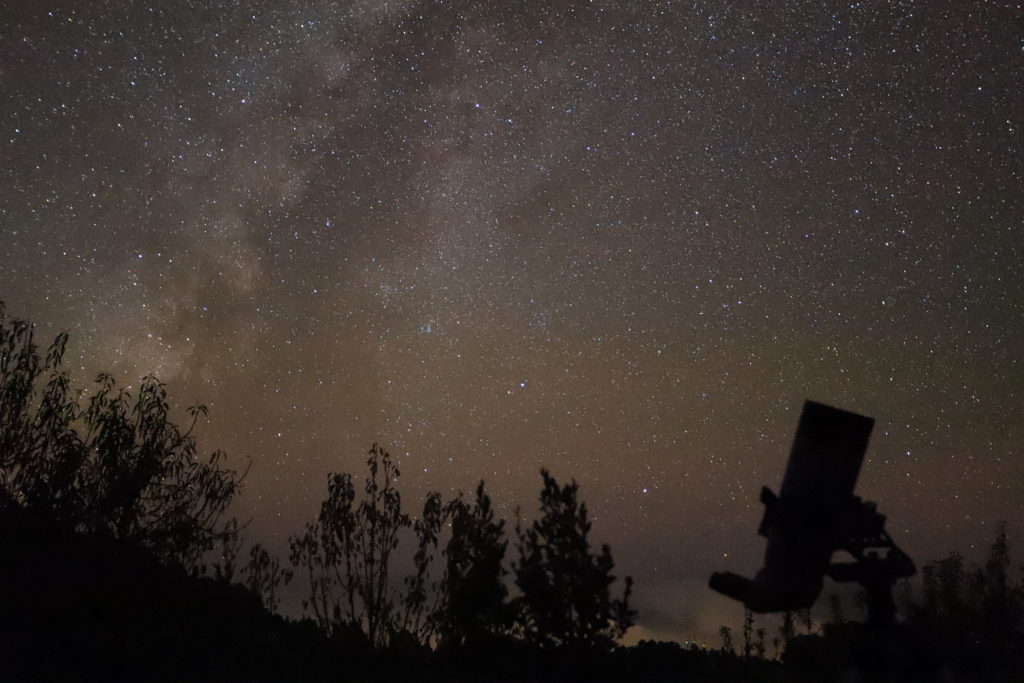
As the darkness settled in so the Milky Way came out in all it’s glory even though we are nearly half the height from our usual viewing both here and in Tenerife. I noted that the sky was indeed significantly darker than Tenerife and made a mental note to remind myself of that since our last visit to this island was 2015.
Alan continued to fight with his Polemaster whilst I cooked dinner, well we had Paella on the hob as the gas oven was not connected (still had the instruction manuals inside it) so instead I cooked the deep fat fry only chips Alan bought under the grill, which worked surprisingly well 🙂
By 22:21 I was ready to start observing. We had problems with the lights around the property not going off, finally by flicking all the trip switches off in the pool house I managed to get the lights off apart from the red glow next to the fountain. Tonight was looking really at binocular objects in Andromeda and working my way through those mentioned in the two great books I bought with me, namely The Night Sky Observers Guide Volume 1 and Touring the University through Binoculars.
Double Cluster – Looking at the Double cluster in Perseus and I can see colour in both clusters. Looking at chi Persei (the more Eastern of the two clusters) there is a variable star RS Persei which has orange hue to it as seen with 18mm lenses on the 100mm giant Binos.
M31 – In the binos this is very bright and stretches out across the field of view and beyond. Faint structure can be seen within the galaxy itself although I failed to be able to see any emission nebula within, which is not surprising given these are only 4″. Looking at M31 through the 6″ Dob with the 24mm Panoptic the view was dimmer, less contrast, the sky looked blacker but the stars and galaxy less pronounced. Clearly the FoV was smaller but the view through the Binos for this object wins hands down. The best view I had was several weeks ago through the 24″ Dob on Tenerife with Bob Trevan and I could make out the emission nebula easily.
M32 – Looked very dim through the binoculars but was there in it’s almost round form.
M110 – Very bright and stood out almost as much as M31. Elliptical in shape but showing no real detail.
NGC 752 This Open Cluster was seen @ 22:42 and again @ 23:15 and also seen through the the 6” Dob to compare. The cluster was easy to find star hoping from Almach the Mag 2.1 star also known as Gamma 1 Andromedae. The cluster nearly fills the filed of view on the Binos with various bright components. I could make out the trio of stars to the East and the string of stars underneath it. There were also a bright pair of stars to the North West. Through the 6″ Dob the cluster was dimmer and the outer edges of the cluster were outside the FoV.
NGC 891 – @23:46 with averted vision (AV) I could see NGC 891 a pencil thin edge on barred spiral galaxy. As expected it was barely visible through the Binos and I did not attempt to find in the 6″. Below is a photo from Mike (Sky Badger) of this galaxy.
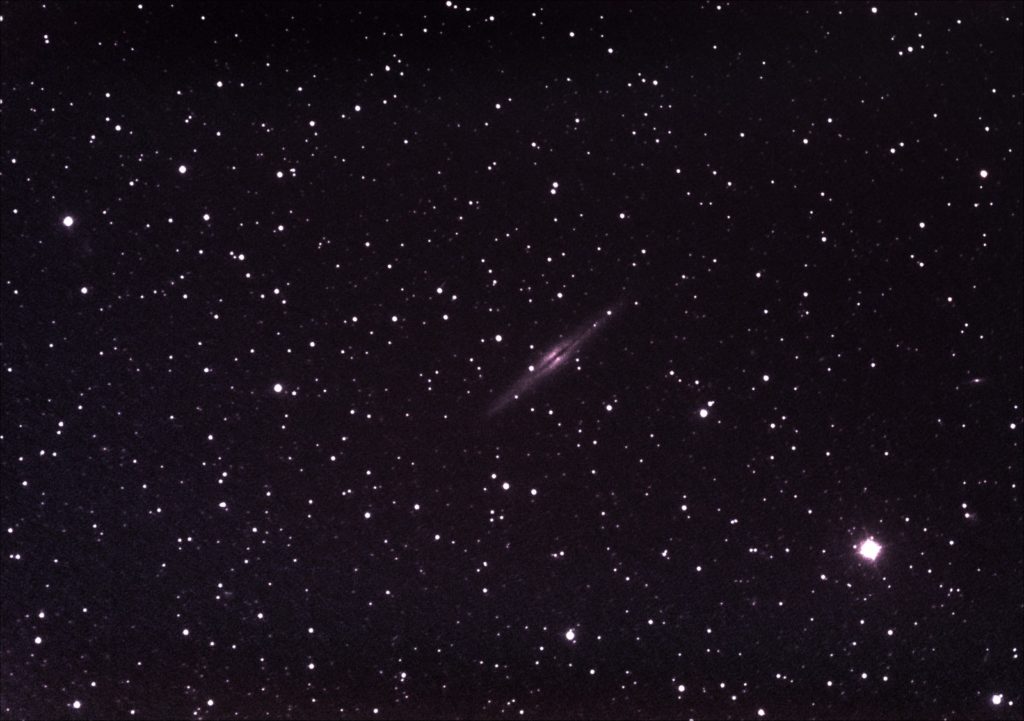
NGC 7686 – @00:02 I looked at NGC 7686 the tiny open cluster which you would not know even if you stumbled across it in the Binos. It took a while to find and I confirmed the cluster comparing the star pattern with a few choice bright stars with those in SkySafari Pro 4 on my iPhone.
Algol – At Alan’s request around 00:17 we checked Algol against gamma Andromeda, so Almach as both are indeed +2.1, this was in planning for the eclipse of the Algol binary system later next week that I wish to observe.
M42 – As Orion rose after 00:30 we observed the Great Orion nebula and the running man nebula through Binos and 6”. Spectacular through the binos for sure, and different details seen in the 6″. The running man could be seen in the same FoV through the Binos.
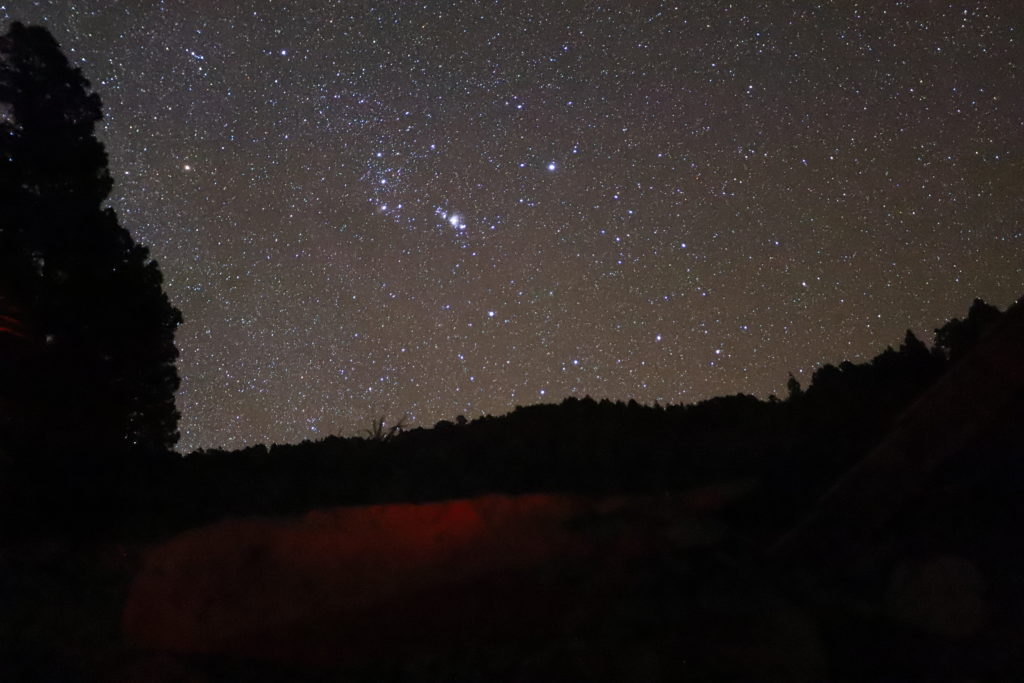
Overall a successful night, as we were very tired by 2am after being up some 24 hours we headed off to bed. For Alan the night was frustrating as his polar alignment never really worked and other equipment challenges forced him to give up and do visual with me. The Canon 6D MkII had a good run and included here are some initial photos straight of the camera.
